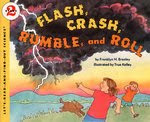An acrostic poem uses the letters in a topic word to begin each line. All lines of the poem relate to the topic word. It seems like an appropriate, timely and fun way to offer some resolutions educators could make regarding the teaching of our children. Finding the funding for them is a resolution we should all be making.
* The following Education Acrostic has contributors from many walks of life in Seattle – legislator, doctor, chef, community activist, community college consultant, glass blower, photographer, real estate broker, historian, special education assistant, career and vocational education administrator, and information technology manager.
E Empathy, civility, and other social skills should be taught in consecutive steps, and uniformly, throughout grades K-12. This includes mandatory classes on relationships, parenting and financial responsibility from middle school on. There should be “how to” classes in cooking, nutrition, finances, etc.
D Develop a ten-year plan guaranteeing that 90% of graduating high school students would be college ready regardless of whether or not they choose to go on to higher education.
U Understand that we are only one segment of a global society and that our students need to have classes with real world situations which help broaden their understanding of the people and cultures of the world in which we live.
C Career and technical education (vocational education) should be given more emphasis and respect in the high schools.
A Art, music and drama should be funded and in every school.
(See December 13 article about Drawing on art from the community)
T “Teaching to the test” is not fair to anyone. Re-evaluate standardized testing. Remember that kids come in with different skill levels and social experiences. The playing field is not level, and the “one test for all” is not a fair assessment of student academic growth, or school achievement.
I Integrate parents into the learning by phoning with positive messages as well as concerns. Arrange home visits when possible. Lessen school anxiety for parents who have had negative academic experiences by inviting them in as partners in their children’s education. Make it easy and fun with “pizza and pop” dinner meetings. Throw in on-site baby sitting for younger children by older students.
O Offer assistance to parents of challenging children with parenting classes, emotional, and non-judgemental support. So that parents can be better homework helpers, offer them tutoring in areas where they feel weak. So that all students can learn, as is their right, remove disruptive students from the room temporarily until they can return as cooperating class members.
*********************************************************************************
If you want to make your own acrostic poem or have your students or children make them, learn more by going to:
http://www.readwritethink.org/Materials/ACROSTIC/
For wonderful, silly, and child savvy poems, read Lunch Box Mail and Other Poems. These clever, and unique peeks at how kids think are written and engagingly illustrated by Jenny Whitehead. (http://jennywhitehead.com/) Here is one example about a parent trying to pry herself away from a reluctant kindergartener on the first day of school:
“My precious dear, my sweetie pie,
I know it’s hard to say bye-bye,
but please let go of Mommy’s thigh.
You’re just a little scared, I know…”
“MOMMY, I DON’T WANT TO GO.”
